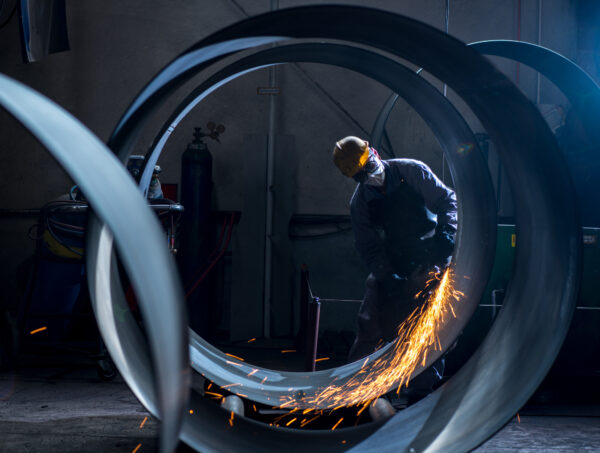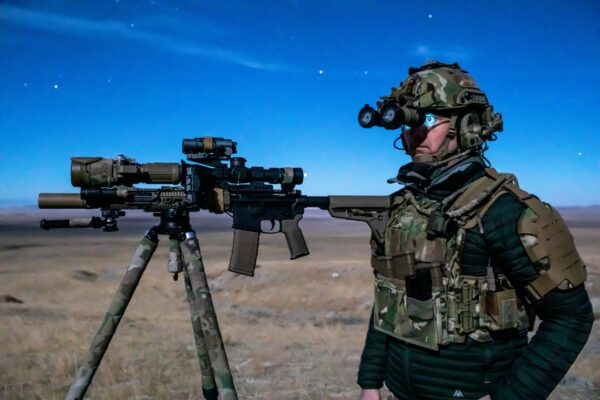An AGM statement in September had implicitly flagged a stronger H1 trading period compared to previous years and, in the event, H118 results showed a strong revenue uplift and margin increase. JV and associate companies both made positive profit contributions in the period. The company retains a strong balance sheet with a net cash position in excess of £30m. Order books in both the UK and India have increased versus last reported and there appear to be some reasonable pipeline opportunities also. Severfield raised its H1 dividend by 29%.
Exhibit 1: Severfield interim splits
Year end March, £m |
H117 |
H217 |
FY17 |
H118 |
|
H118 v H117 |
Group revenue |
118.2 |
144.1 |
262.2 |
137.1 |
|
+16.0% |
Group operating profit – reported |
8.2 |
11.4 |
19.6 |
12.7 |
|
+54.2% |
Operating margin |
7.0% |
7.9% |
7.5% |
9.3% |
|
+230bp |
Group operating profit – adjusted* |
9.2 |
12.9 |
22.1 |
13.5 |
|
+45.7% |
Operating margin – adjusted* |
7.8% |
8.9% |
8.4% |
9.8% |
|
+200bp |
Source: Severfield, Edison Investment Research. Note: *Reported operating profit is adjusted for share-based payments and pension net finance costs. Neither profit line includes any contribution from JV/associates.
UK operations: Revenue, margin and order book all ahead
A rising order book from June 2016 drove a marked step up in activity levels in the second half of FY17 as some of the larger project work cycled through. H118 saw a continuation of this with headline revenue growth of 16%; three-quarters of this was volume-related and around one-quarter from higher pricing. Severfield does not take materials pricing risk in its contracts and, other things being equal, a pass-through of rising input costs has a dampening effect on reported margins. However, the combined effect of higher-volume throughput/operational efficiencies and a higher incidence of successful contract completions in the period with a favourable timing effect of financial close on some contracts each added c 100bp to the reported margin year-on-year. (In addition, operating profit included a c £0.7m asset disposal profit, equivalent to 0.5% of the reported operating margin.)
At any point in time, Severfield has around 80 live projects at varying stages of the contracting process. Severfield is the largest structural steel fabricator in the UK but its market position is not solely predicated on scale; design and erection complexity are key areas where it adds value to client projects contributing to whole build efficiencies in timing and cost.
During H118, some of the highlighted projects included:
•
Tottenham Hotspur stadium (14,000 tonnes of steelwork, ongoing),
•
Wimbledon No. 1 court retractable roof (4,900 tonnes, ongoing), and
•
22 Bishopsgate, London commercial office tower (16,000 tonnes, ongoing)
•
Ordsall Chord railway bridge (3,800 tonnes, completed),
•
London Bridge Station platform canopies (4,030 tonnes, ongoing), and
•
The Lexicon, Bracknell retail complex (4,200 tonnes completed).
•
V&A Museum, Dundee (780 tonnes, completed),
•
Coal Drops Yard, Kings Cross retail regeneration (1,300 tonnes, completed), and
•
BBC Broadcasting House, Cardiff (2,100 tonnes, completed)
The recent order book movements (ie a £315m peak November 2016, retracing to £229m in June this year) substantially reflected the intake and execution of the major projects shown above. The November £245m reading represents an uptick since June 2017 and given that H118 revenue was £137m – accepting that the trading period and order book end dates differ – this indicates a healthy intake of underlying new order activity.
Severfield has not really operated at the smaller end of the structural steelwork project market (ie below 500 tonnes) though it is now taking steps to develop a presence here. Its Sherburn facility has been mostly focused on portal frame design-and-build work, specialising in distribution sector clients. The intention is to consolidate much of this work onto the Dalton site, freeing up Sherburn to supply packages of processed steelwork and ancillary items into smaller contractor customers. The site’s previously noted capacity was up to 25,000 tonnes; it is understood that no equipment is being relocated, directly affected members of the c 250 workforce will be offered alternative roles and no exceptional costs are anticipated. This should both support high utilisation rates at Dalton and allow Severfield to broaden its revenue base by accessing a hitherto unaddressed part of the market. It also retains an ‘overflow’ or ‘subcontract’ capacity option if the other three fabrication facilities are fully loaded. Elsewhere, Severfield continues to invest in its fabrication facilities, transportation and erection operations and, in support of them, more advanced and increasingly integrated IT capability. This has contributed to the positive UK margin development and will underpin future operational performance.
Other operations: Indian JV and CMF both making positive contributions
The combined contribution to PBT from Severfield’s Indian JV (JSW Severfield Structures) and associate company (Composite Metal Flooring) was £0.283m and comprised the company’s share of profit after tax from each of these entities.
JSSL’s structural steelwork activities in India have been profitable in underlying terms (ie at the EBIT level) for some time now but its capital structure and relatively high local interest rates have meant that it has had minimal impact on group P&L. An uptick in revenue and EBIT margin supported a breakeven PAT contribution in H217 with a further improvement to a modest profit position in H118. We believe that this represents record first half revenue (at or slightly above £22m) and an EBIT margin comparable to that earned in the UK. The JV’s term loan was repaid in June – through equal equity injections by its two partners – and this will benefit Severfield’s share of PAT going forward (though we note that working capital and trade financing facilities will continue). The Indian order book stood at £79m in November – more than double the level a year earlier - split broadly equally between industrial project work which provides a healthy business baseload and higher margin commercial ones. We believe that this represents a record order level for the JV and, citing a number of large potential pipeline jobs, management appears confident that current activity levels can at least be sustained.
Severfield took a 50% stake in CMF – a design, manufacture and installation of structural metal decking and other cold rolled steel products – in November 2015. Since this time, it has made a small positive share of PAT contribution in each six month period reported subsequently. Based on a c £4m investment, the corresponding annual return on investment is in the 8-10% range but we note that Severfield now sources all of its metal decking requirements from CMF and, we would expect, secured more advantageous terms for doing so. No other financial information is provided on CMF but annual revenues are understood to be c £20m. We understand that the company has made investments in equipment to broaden the product offering to include purlins and rails (roof framing members) using similar processes and materials to those already employed. Hence, the potential value of work packages available to Severfield/CMF is expanded.
We do not factor in any further investment into either JSSL or CMF in our model, nor do we anticipate any cash returns to shareholders over our estimate horizon. They are both strategic investments and should continue to play a part in the long-term development of the group.
Positive free cash flow funding investment and dividends
At the end of September, Severfield held a £31.4m net cash balance sheet position, with a negligible level of financial lease obligations and no bank borrowings. We estimate that customer advances represented c £4-5m of this cash balance, slightly lower that the end FY17 position. Overall, there was a £1.2m net cash outflow in the period, the net result of a healthy free cash inflow substantially funding discretionary investment and dividend payments.
EBITDA of £14.6m (excluding asset disposal profits) was well ahead of the £11.1m achieved the previous year, entirely driven by the stronger EBIT performance reported earlier. This was partly offset by a small working capital outflow (£0.6m) in H1 having previously seen inflows (between £1.7m and £6.2m) in the last three first half trading periods. Debtor and creditor flows in H118 were both higher than usual – reflecting activity levels – and the net outcome appears to be chiefly due to an adverse payables timing effect at the period end. Overall, operating cash flow rose by £1.2m y-o-y to 13.5m.
Below this, cash tax of £2.1m was in line with the H118 headline P&L charge. In the last three years, Severfield has consistently invested in capex ahead of its prevailing depreciation rate, contributing to improved operational efficiency and margins. This trend continued into H118 in a wide range of projects including production equipment, new in-house paint facilities at two sites as well as supporting construction site activity with new items. Ongoing investment is being made in upgrading and integrating IT systems across all sites and between project phases. In aggregate, gross capex totalled £3.3m and even after taking into account asset disposal proceeds, net capex of £2.4m was still ahead of the £1.8m depreciation charge in the period. Taking these items into account, free cash flow (FCF) of c £9m was slightly lower than H117 and was applied to:
■
JV investment: £5.3m – as previously flagged both partners each injected this sum in new equity to recapitalise the JV’s longer-term funding base
■
Dividends: £4.8m – cash payment of the FY17 final (of 1.60p per share)
This left the period end cash position slightly lower than it was at the end of March.
Cash outlook: We have implicitly factored in a lower H218 EBIT contribution versus H1, which we believe is consistent with a lower expected incidence of project financial close positions on broadly similar revenue. Otherwise, we expect customer advance balances to substantially flow out by the year end, contributing to a H2 working capital outflow, and a similar level of capex in H2 to that seen in H1. So, while H2 FCF is set to be below H1, the one-off JV investment will not recur and the H118 cash dividend is smaller than the FY17 final. This leads to a c £3m expected net cash inflow in H2. Beyond this, we believe that Severfield is capable of generating £10m+ net cash pa; in the absence of higher rates of organic or acquisitive investment and/or dividend distribution, this would result in a net cash position in excess of £50m by the end of FY20 on our estimates.



















